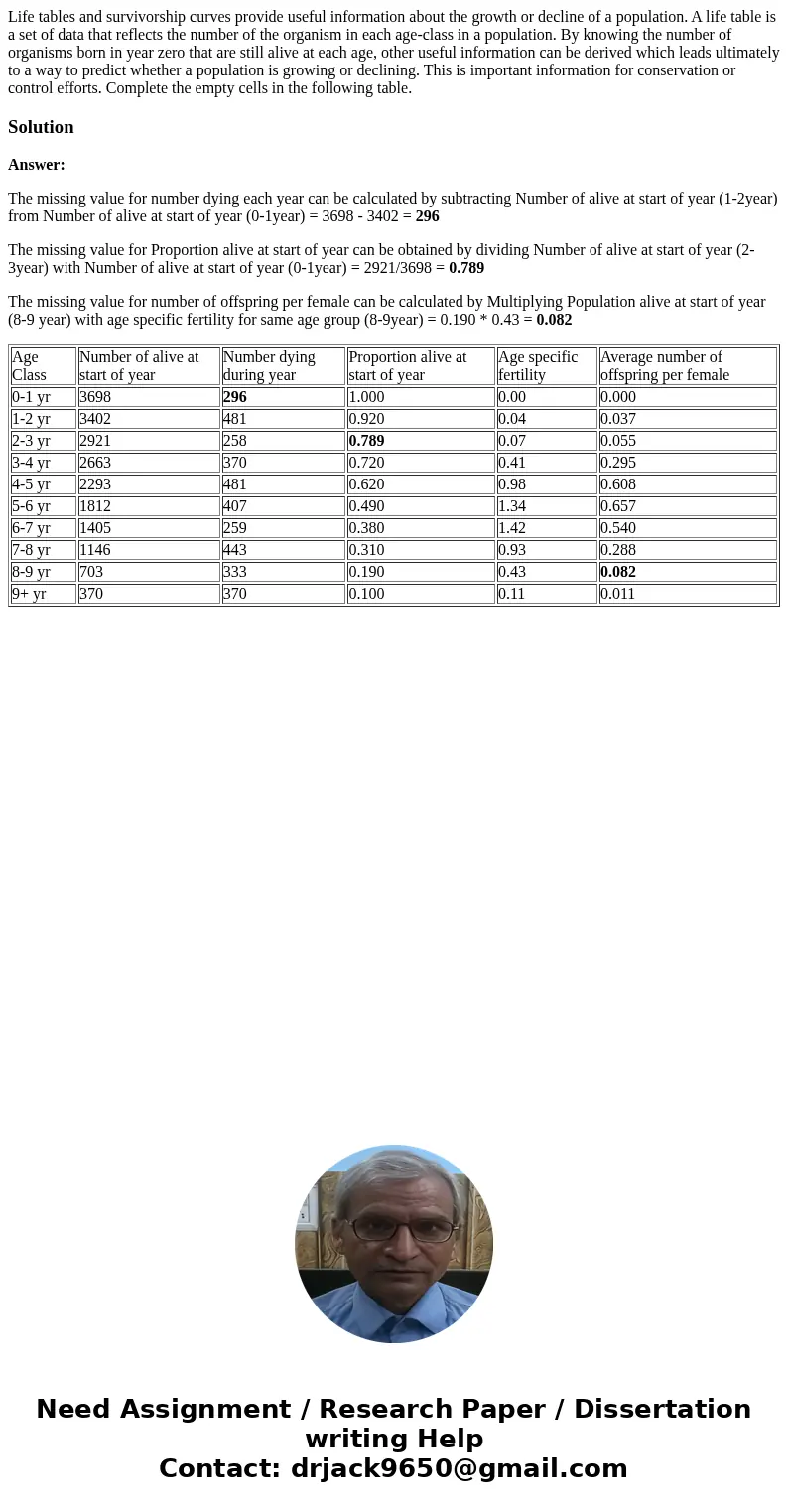Life tables and survivorship curves provide useful informati
Life tables and survivorship curves provide useful information about the growth or decline of a population. A life table is a set of data that reflects the number of the organism in each age-class in a population. By knowing the number of organisms born in year zero that are still alive at each age, other useful information can be derived which leads ultimately to a way to predict whether a population is growing or declining. This is important information for conservation or control efforts. Complete the empty cells in the following table.

Solution
Answer:
The missing value for number dying each year can be calculated by subtracting Number of alive at start of year (1-2year) from Number of alive at start of year (0-1year) = 3698 - 3402 = 296
The missing value for Proportion alive at start of year can be obtained by dividing Number of alive at start of year (2-3year) with Number of alive at start of year (0-1year) = 2921/3698 = 0.789
The missing value for number of offspring per female can be calculated by Multiplying Population alive at start of year (8-9 year) with age specific fertility for same age group (8-9year) = 0.190 * 0.43 = 0.082
| Age Class | Number of alive at start of year | Number dying during year | Proportion alive at start of year | Age specific fertility | Average number of offspring per female |
| 0-1 yr | 3698 | 296 | 1.000 | 0.00 | 0.000 |
| 1-2 yr | 3402 | 481 | 0.920 | 0.04 | 0.037 |
| 2-3 yr | 2921 | 258 | 0.789 | 0.07 | 0.055 |
| 3-4 yr | 2663 | 370 | 0.720 | 0.41 | 0.295 |
| 4-5 yr | 2293 | 481 | 0.620 | 0.98 | 0.608 |
| 5-6 yr | 1812 | 407 | 0.490 | 1.34 | 0.657 |
| 6-7 yr | 1405 | 259 | 0.380 | 1.42 | 0.540 |
| 7-8 yr | 1146 | 443 | 0.310 | 0.93 | 0.288 |
| 8-9 yr | 703 | 333 | 0.190 | 0.43 | 0.082 |
| 9+ yr | 370 | 370 | 0.100 | 0.11 | 0.011 |

 Homework Sourse
Homework Sourse